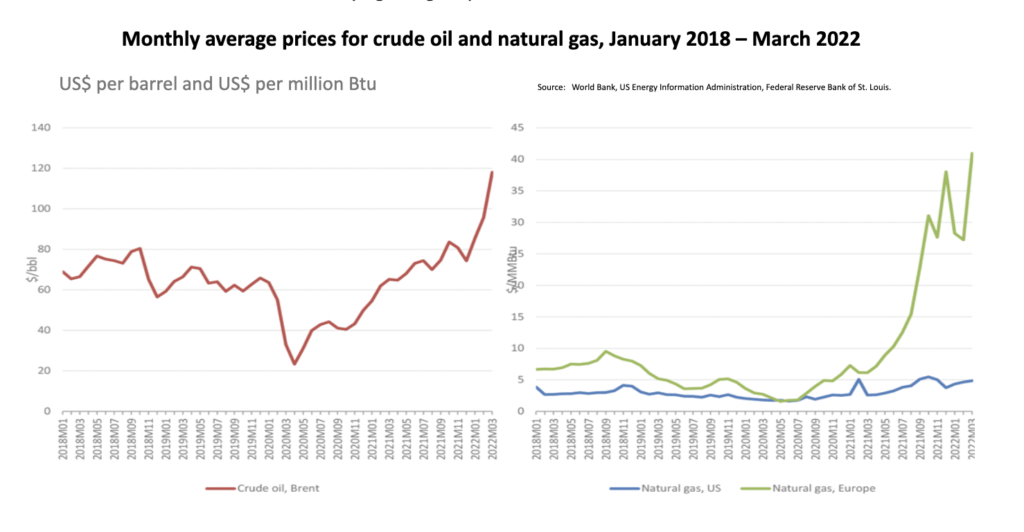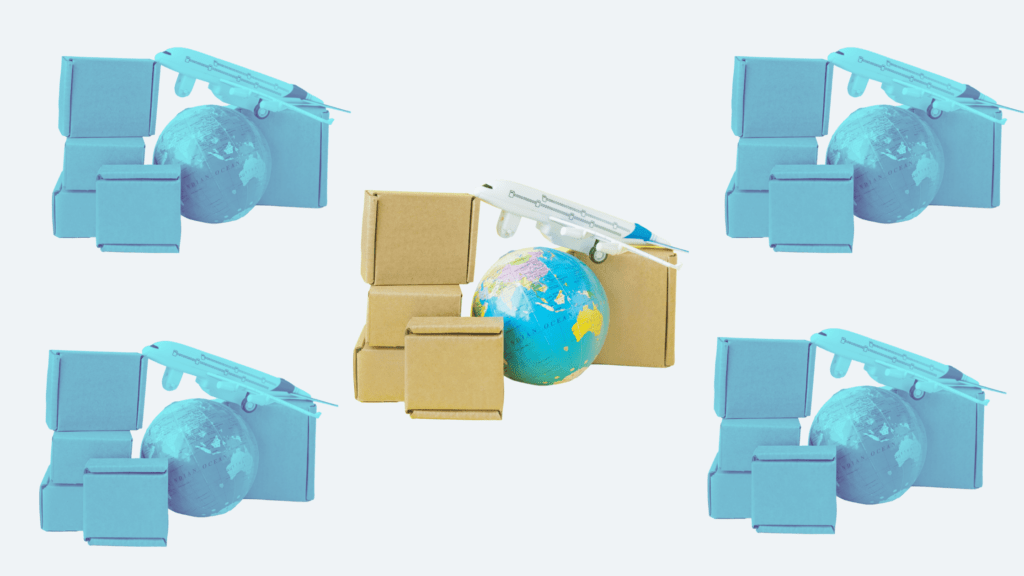Prospects for the global economy have darkened since the outbreak of war in Ukraine by Russia on 24 February 2022. The war is not only creating human suffering but also reshaping the trade structure of the world. WTO said, “World GDP at market exchange rates should increase by 2.8 percent this year, or 1.3 percentage points down from the previous forecast”.
Supply Shortage and Surge in Inflation
Both Russia and Ukraine are the biggest suppliers of essential goods such as food, energy, and fertilizers. The two countries supplied around 1/4th of wheat, 1/6 of barley, and 1/2 of sunflower products in total exports globally in 2019. Russia alone accounted for 1/10 of world trade in fuels, including a 20 percent share in natural gas exports. Europe the key receiver of the supplies from both countries is likely to experience the worst economic impact. Africa and the Middle East are the most vulnerable areas since they import over 50 percent of their cereal needs from Ukraine and/or Russia. In total, 35 countries in the African region import food, and 22 import fertilizer from Ukraine, Russia, or both.
Now the supplies from both the countries are discontinued and this escalated the prices of all the products, especially food and energy. World fuel prices were already surging prior to the war. Prices of Food materials such as Wheat and Cereals have also increased and the global shortage has left no option before the countries rather than buying at higher prices.

Poverty and Hunger
The World Bank’s baseline projection assumes Ukraine’s poverty, based on the $5.50 per day threshold rate, will increase from 1.8% in 2021 to 19.8% in 2022. It added “that models developed by the United Nations suggested that a more severe and protracted war could lead to poverty affecting nearly 30% of the population. Quoting estimates from authors of a Centre for Global Development blog, the World Bank said the latest surge in food prices could push an additional 40 million people under the $1.90-per-day poverty line”
Automotive, Transport, Chemicals
The crisis is strongly impacting an already strained and crippling automotive sector due to various shortages and surged prices of commodities & raw materials: metals, semiconductors, cobalt, lithium, and magnesium.
Ukrainian automotive factories have major suppliers in Western Europe: some announced the discontinuation of factories in Europe while other factories around the world are already planning outages due to global chip shortages. Airlines and maritime freight companies are also suffering from higher fuel prices, disrupted trade routes, and changing tourism trends.
No Region Can Isolate Itself from the Impact of Imported Inflation and Global Trade Disruptions
In the rest of the world, the economic transitions will be felt mainly through the increase in commodity prices, which will spark already existing inflationary pressures. As it is obvious when commodity prices soar, importers of energy & food products will be greatly affected by major supply disruptions in the probable event of even greater chaos arising out of the conflict. The disruptions from Europe will also hamper global trade.
In Asia-Pacific, the impact can be felt almost immediately by witnessing higher import prices, particularly in energy prices, along with many economies in the region being net energy importers, led by China, India, South Korea, Japan, and Thailand.
As strings of North American trade and finances with Russia and Ukraine are fairly limited, the consequences of the conflict can majorly be felt through the price channel and the slowdown movement of European growth. Despite the strong potential threat of slower economic growth and higher inflation, the recent geopolitical events are not on the aligned path to take strong cumulative initiative for the speedy recovery of the global economy.
References
https://blogs.worldbank.org/developmenttalk/how-war-ukraine-reshaping-world-trade-and-investment
https://fred.stlouisfed.org/source?soid=53
https://blogs.imf.org/2022/03/15/how-war-in-ukraine-is-reverberating-across-worlds-regions/


Digital Information (Digital Information) ie Complete Knowledge This is an informative digital website blog, in which we try to give you better and better information on different topics. In Digital Information, information related to general knowledge, life introduction, trending news, health related, web series, and history is written in this blog website. I do research on all these topics and give information about it, so that you can give good and better content in less words and in less time.